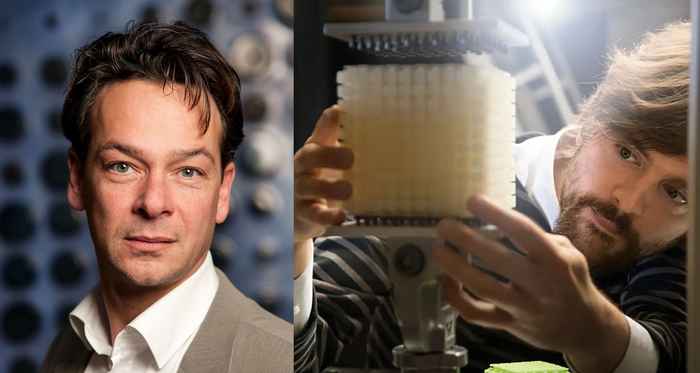Proof of Concept Grants for Corentin Coulais and Daniel Bonn
27 July 2023

The Proof of Concept grant competition allows researchers to apply for funding if they have ongoing or recently completed research projects supported by ERC Starting, Consolidator, Advanced, or Synergy Grants. Recipients of these grants use this type of funding to verify the practical viability of scientific concepts, explore business opportunities or prepare patent applications.
Lightweight Vibration Absorption
Corentin Coulais’ successful grant application focuses on the absorption of shocks and vibrations. Vibrations cause unwanted noise and even failure in many areas, including vehicles such as spacecraft, road vehicles and trains, sensitive optical or high-tech instruments and machinery. Preventing vibrations is essential for ensuring safety, comfort, and quality in various applications and industries. In his application, Coulais proposes to use buckling as a functional mechanism to create vibration absorbers. He will use flexible mechanical metamaterials made of metal and fibre-reinforced composites with tailored buckling and post-buckling properties. Establishing such metamaterials will be a prime avenue to create lightweight structures that are orders of magnitude better at absorbing shocks than their existing counterparts.
This project will establish the potential of these materials as a competitive solution for lightweight structures, combining high damping and high specific stiffness in high-tech and aerospace applications. In particular, the metamaterials will allow to reduce the weight and increase the damping of energy-absorbing components in vehicles, hence reducing their overall weight. This in turn will reduce the CO2 footprint of the manufacturing of these vehicles and their fuel consumption.
Targeted respiratory drug delivery
The main purpose of Daniel Bonn’s successful proposal is to develop a radically new technology for very precisely delivering medicine to the human body. Targeted deposition of drug formulations to the lungs exhibits great promise in several treatments, such as treatments against lung cancer or vaccination against COVID-19. This technique requires oral and nasal inhalation for which spray pumps and nebulizers are widely used to transform an aqueous formulation into a soft mist spray.
However, producing the necessary drop size is hampered by droplets merging together, making drops different from one another and too large. Because of this, they deposit in the wrong places. Large droplets deposit mostly in the upper respiratory tract (mouth, throat or nasal cavity), whereas small droplets can be lifted by the airstreams and deposit mostly in the lower respiratory tract (bronchi and lungs).
The innovation that Bonn proposes relies on electrically charging drops through the friction with the nozzle material. The charged drops repel one another and as a result do not merge, allowing precise control of their size to target, for example, the lungs. This will allow to achieve safe and effective targeted deposition of drugs or vaccines with hitherto unequaled precision.